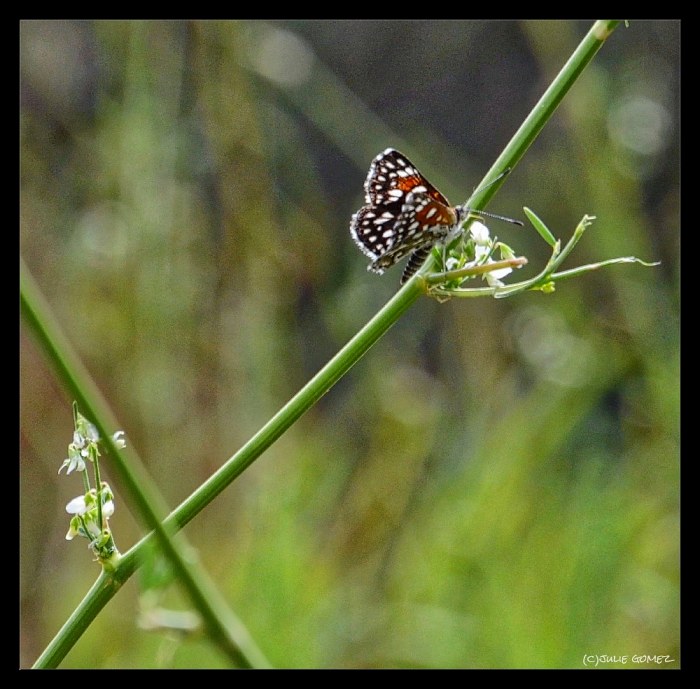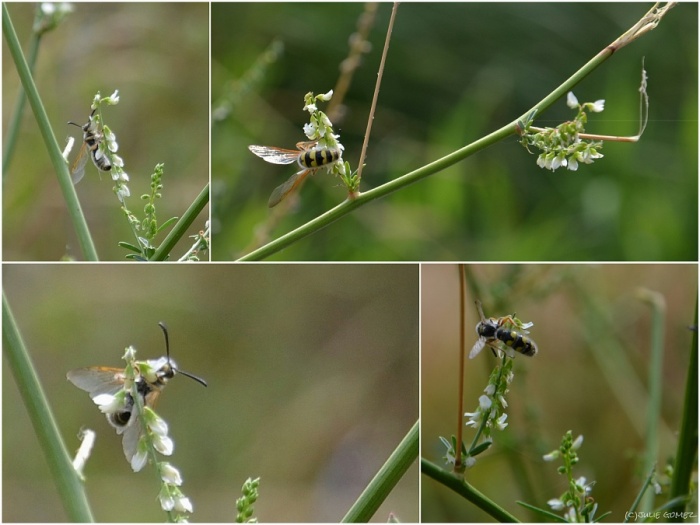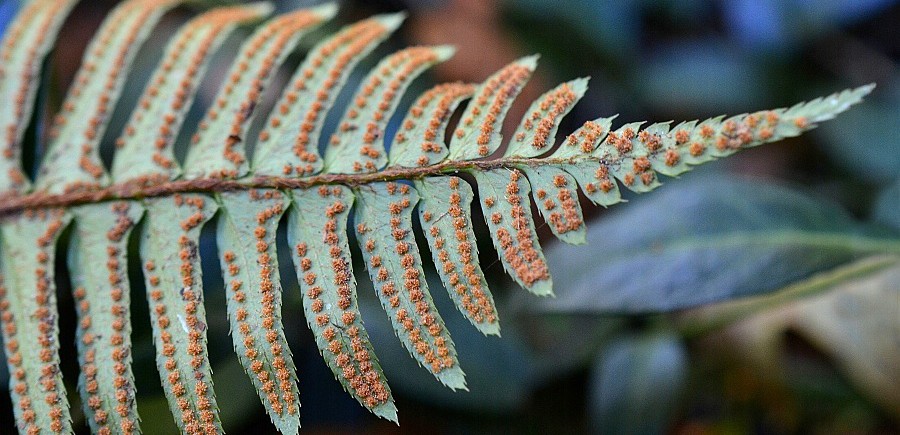
Beautiful and graceful, varied and enchanting, small, but approachable, butterflies lead you to the sunny side of life, and everyone deserves a little sunshine.
—Jeffrey Glassberg, author of Butterflies of North America
____________________
It was 95 degrees in the canyon, but I didn’t complain, well, not much. It could have been worse if not for the clouds that worked like a sun shield. I stood at the edge of the path gazing at the sparkling, rushing waters of the Deschutes River. The path was narrow, but not steep; it led to a level, grassy bank, where there was a large shrub for shade, and a safe place to wade. It looked like a good spot, and I said, “Let’s fish here.”
It’s been a bad season for both the fish and the fishing. With little rain, many of our favorite lakes and rivers have shrunk. This has led to restrictions for many rivers west of the Cascades something we’re not used to. At the time of this writing, lines must be reeled in from the rivers at 2 p.m.; a theory aimed to put less stress on wild fish. The lakes, however, held no restrictions, but most were too warm and too shallow to fish. With that in mind, we drove east of the Cascades to Maupin, to fish the Deschutes River.
I love the drive to Maupin. The Wapinitia Highway is never crowded. It is along this stretch of highway that I enjoy the subtle changes of scenery, watching the landscape go from a wet conifer forest to dry pine forest, to semi arid sage and juniper desert; and the aromas they generate are something to be savored.
We had a couple of stops to make when we reached Maupin. The first was the fly shop to check the river and trout regulations, and to find out what the trout were biting. To our delight, this section of the Deschutes River was open to catch-and-release. The flies of the day were the No.16 and No.18 brown caddis flies. Our second stop was the market on main street where we loaded up on bottled water, chips, and my favorite dill pickles (as close to homemade as you can get). I bought two jars to take home.

It was getting hotter in the canyon by the minute. Having scouted some potential fishing sites we settled on Longbend that offered the easiest access. In 95-degree heat, we didn’t want to hike too far. Besides, it was one of the few grassy spots along the riverbank, and there was shade, which is scarce in these parts.
I had every intention of fishing, but with views so wonderfully distracting, I took to exploring instead. I took a long drink from my canteen, and then stepped into the river. Oh, it felt so good; I felt ten degrees cooler. Downriver, Chris was casting a caddis fly that the trout refused, and who could blame them? It was so darn hot! I waded upstream taking notice of the wildflowers along the bank. There was bird’s-foot trefoil, Lotus corniculatus, white knapweed, Centaurea diffusa, and white sweet clover, Melilotus albus. None of them were native plants, but their flowers were no less beautiful. A Mormon metalmark, Apodemia mormo, thought so too!


Although the metalmark is said to be a common butterfly, this was a first for me, and I was thrilled. I couldn’t step from the river for fear it would fly away. So, with wet feet, and a bit of twisting this way and that, I watched it flutter, land, and sip repeatedly on white sweet clover flowers.

Soon, another visitor landed on the same plant—a scoliid wasp, which was identified by the experts at BugGuide. There are some 560 scoliid wasps worldwide that range in a variety of size and color. Yellow and black scoliids, such as this one, are typical. Scoliid wasps forage in late summer feeding on nectar-rich plants. They are beneficial pollinators, and parasitoids of scarab beetle larvae. Female scoliids burrow into the ground in search of beetle larvae. When she finds one, she paralyzes the beetle larvae with her stinger. Digging an egg chamber, she will deposit the paralyzed beetle larvae and lay an egg for which her own larvae will feed on the beetle larvae.
Chris reeled in his line, and was on the shore packing up. The relentless heat was simply too much. Up to my knees in the river, I turned and was starting back when I saw a large garter snake swimming right to me. Apparently, the heat was even too much for the snakes. The serpent made graceful S-curves; and I could have gotten some wonderful shots, but instead of pointing my camera lens, I pointed my finger. I wanted Chris to see it. That’s all it took. The snake vanished underwater, and that was the last I saw it. And although I didn’t get the snake photo, I did get wet feet, metalmarks, and scoliid wasps.
____________________
Copyright 2015. All rights reserved.
